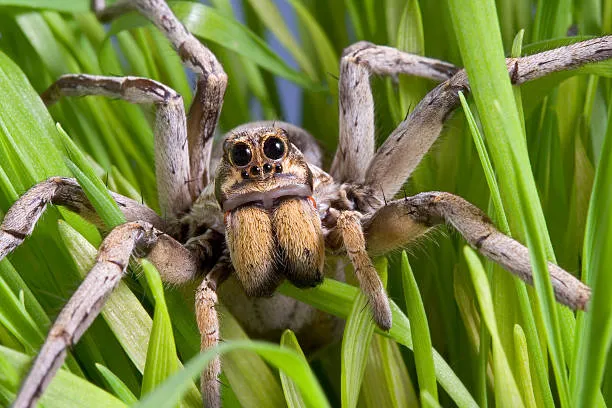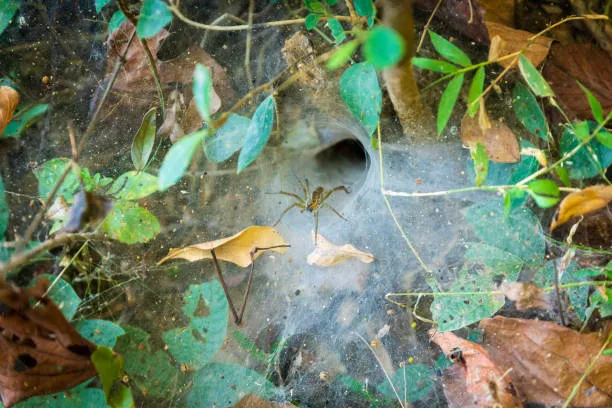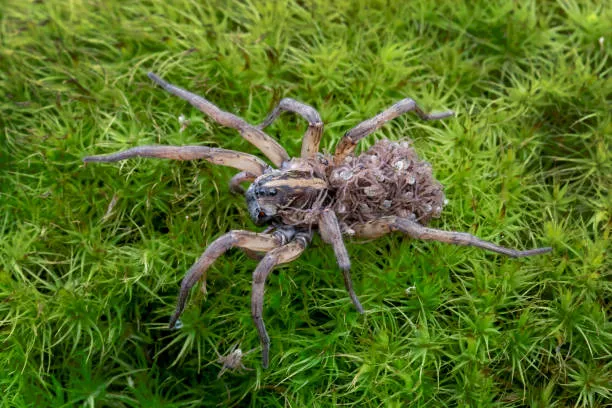Introduction to Wolf Spiders
What Are Wolf Spiders?
Wolf spiders belong to the family Lycosidae, named after the Greek word “lykos,” meaning wolf. These agile predators are renowned for their hunting prowess and sharp vision, making them some of the most intriguing arachnids.
Defining Characteristics
Unlike web-building spiders, wolf spiders actively pursue their prey.They have robust, hairy bodies and strong legs designed for speed and precision. Their eyes, arranged in three rows, provide excellent vision, crucial for nighttime hunts.
Scientific Classification
Wolf spiders are part of the Araneae order and the Lycosidae family. There are over 2,000 species, each adapted to different habitats worldwide.
Common Misconceptions About Wolf Spiders
Many people mistakenly believe wolf spiders are overly aggressive or harmful. In reality, they are shy creatures that prefer avoiding human contact.
Table of contents
- Physical Appearance and Anatomy
- Habitat and Distribution
- Behavior and Hunting Techniques
- Diet and Predatory Role
- Reproduction and Life Cycle
- Myths and Facts About Wolf Spiders
- Wolf Spiders vs Other Spiders
- Benefits of Wolf Spiders
- Risks and Safety Concerns
- Observing Wolf Spiders in the Wild
- Conservation and Ecological Importance
- Wolf Spiders in Popular Culture
- Conclusion

Physical Appearance and Anatomy
Size and Coloration
Wolf spiders range from 0.4 to 1.4 inches in size. Their colors—brown, gray, or black—help them blend seamlessly into their environment.
Unique Features
Keen Vision
Eight eyes, with two large central ones, give wolf spiders a distinctive appearance and remarkable visual capabilities.
Powerful Legs
These legs enable swift movements, vital for catching prey and escaping predators.
Habitat and Distribution
Where Wolf Spiders Live
Global Distribution
Wolf spiders inhabit every continent except Antarctica, thriving in diverse ecosystems ranging from deserts to forests.
Preferred Environments
They favor areas with ample ground cover, such as leaf litter, rocks, and logs. Some even adapt to urban gardens and homes.
Adaptability to Various Climates
Wolf spiders exhibit incredible resilience, surviving in both extreme heat and cold.

Behavior and Hunting Techniques
Solitary Nature
Wolf spiders are solitary hunters, often seen roaming alone. They depend on stealth and speed instead of webs to catch their prey.
How Wolf Spiders Hunt
Ambush Strategy
These spiders excel at ambush tactics, waiting patiently before pouncing on their unsuspecting prey.
No Webs—Only Speed
Unlike web spinners, wolf spiders chase down their targets, showcasing their athleticism.
Interaction With Humans
Although they can bite if threatened, wolf spiders rarely pose a significant risk to people.

Diet and Predatory Role
Typical Prey
Wolf spiders primarily feed on insects and small arthropods, making them valuable pest controllers.
Importance in the Ecosystem
Their predatory habits help regulate insect populations, maintaining ecological balance.
Reproduction and Life Cycle
Mating Rituals
Male wolf spiders engage in intricate courtship dances to attract females, ensuring the continuation of their lineage through successful mating.
Egg Sac and Spiderlings
Female wolf spiders transport their egg sacs attached to their spinnerets. After hatching, spiderlings ride on their mother’s back until they can fend for themselves.
Myths and Facts About Wolf Spiders
Do They Bite Humans?
While wolf spiders can bite, their venom is mild and usually harmless to humans.
Debunking Common Myths
Contrary to popular belief, wolf spiders are not overly aggressive or life-threatening.
Wolf Spiders vs Other Spiders
How They Differ From Web-Building Spiders
Unlike web-builders, wolf spiders rely on agility and strength to hunt.
Comparison With Tarantulas
Though similar in appearance, tarantulas are much larger and less agile than wolf spiders.
Benefits of Wolf Spiders
Natural Pest Control
Wolf spiders reduce pest populations, benefiting gardens and agricultural fields.
Role in Biodiversity
As predators, they contribute to a balanced food web, supporting overall biodiversity.

Risks and Safety Concerns
Are Wolf Spiders Dangerous?
While their bites may cause mild irritation, they are not considered dangerous to humans.
How to Handle Encounters
If you spot a wolf spider indoors, gently guide it outside or contact pest control for humane removal.
Observing Wolf Spiders in the Wild
Best Practices for Spotting Them
Look for them during dusk or nighttime using a flashlight to catch the reflective glow of their eyes.
Ethical Considerations
Avoid disturbing their habitats or handling them unnecessarily.
Conservation and Ecological Importance
Threats to Their Population
Habitat destruction and pesticide use pose risks to wolf spider populations.
Why They Matter to the Ecosystem
By controlling insect populations, wolf spiders play a vital role in maintaining ecological balance.
Wolf Spiders in Popular Culture
Portrayals in Media
Wolf spiders often appear in nature documentaries and educational content, showcasing their unique behaviors.
Fascination in Science and Art
Scientists and artists alike are captivated by their intricate anatomy and behaviors.
Conclusion
Wolf spiders are misunderstood yet remarkable creatures. Their speed, hunting skills, and ecological role make them vital to our planet’s biodiversity. By appreciating and respecting these fascinating arachnids, we can better understand the delicate balance of nature.

